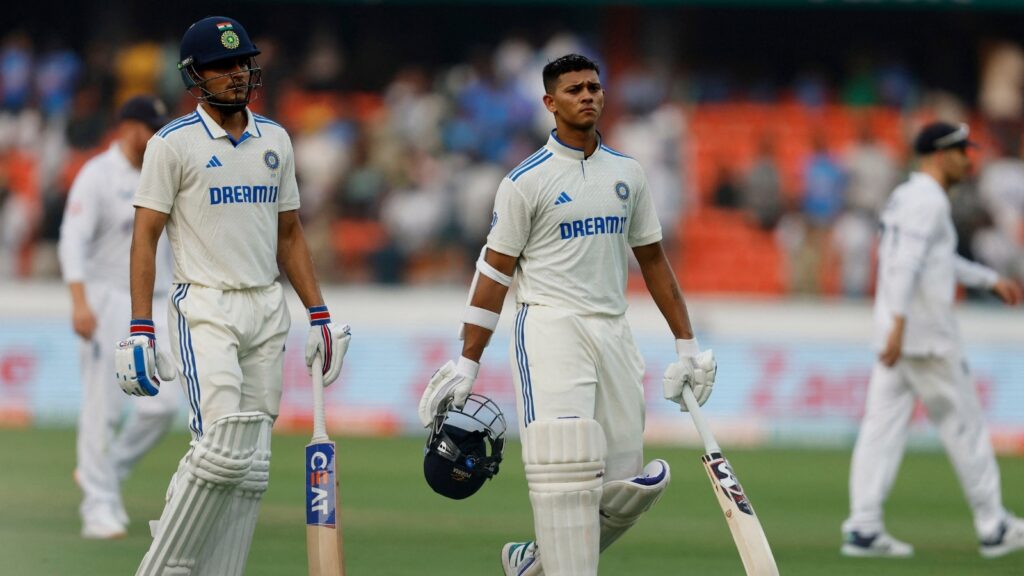When the national selectors sit down on August 19 to pick India’s squad for the upcoming Asia Cup, they would face a very familiar conundrum. Having received a huge shot in the arm with regards to the transition phase in England, where Shubman Gill led India to an admirable 2-2 scoreline against all odds, there are some familiar misplaced notions hanging in the air. Given their form and performance in England, Gill and Yashasvi Jaiswal making a return to the T20 squad seems every bit destined. The only question though is in place of whom?
Make no mistake this is not a straightforward call. Of course, no selection call, particularly when there are multiple options on the table is easy. But in the T20 scheme of things, the selectors don’t just have a happy headache. It is a migraine. Since winning the T20 World Cup, India have grown from strength-to-strength. Having adapted a more aggressive approach just in time for the last T20 World Cup, the arrival of Gautam Gambhir as head coach and Suryakumar Yadav as captain has seen India become bolder than ever before with their approach.
Having accepted T20 brings with it high-risks, they have given the batting line-up that includes Abhishek Sharma, Sanju Samson, Tilak Varma, Surya, Hardik Pandya, Rinku Singh, Axar Patel, Nitish Kumar Reddy, Shivam Dube, the freedom to expand their game by being ultra-aggressive at all points. The concept of having an anchor no longer exists in their thinking. It is a batting unit that is built on firepower and variety with the depth so unforgiving on the opponents. To defend the World Cup on home soil next year, India’s team management has zeroed in on Jasprit Bumrah, Varun Chakaravarthy and Kuldeep Yadav as X-factor options. Beyond them are Arshdeep Singh, Ravi Bishnoi, Harshit Rana, Ramandeep Singh.
And since winning the T20 World Cup, this set of players haven’t lost a single series. Their series wins against Sri Lanka, Bangladesh, South Africa and England have all been statement making ones, the sort of one that has already made fans sit on the edge of their seats. In 15 matches, they have won a staggering 13 across different conditions, challenging themselves to raise the bar.
In the past the national selectors, after playing with a young squad to start a new T20 cycle, have gone back to experienced, familiar names whenever a T20 World Cup is around the corner. Even for the 2024 edition, Rohit Sharma and Virat Kohli came into the frame at the eleventh hour based on the impetus they were able to provide in the 50-over World Cup six months back. The T20 series against Afghanistan before the World Cup in US & Caribbean was the first for the duo since they played their old-fashioned game against England in the semifinals of the 2022 edition Down Under.
Given such late somersaults by the selection panel, one can’t rule out Gill and Jaiswal making the Asia Cup cut. If Jaiswal ended up being a non-playing member in the last T20 World Cup, Gill could not even make the squad. But off-late, the selectors have also shown great restraint from mixing formats, unless they see a genuine talent that is worth investing in.
So where does this leave Gill, Jaiswal and even for that matter Rishabh Pant in India’s T20 scheme of things. The Indian Express understands that Jaiswal is not part of the T20 plans and so is the case with Pant.
Story continues below this ad
Samson, who started the Gambhir era with successive zeroes, on the back of getting a string of starts as an opener has undoubtedly established himself as the first-choice wicketkeeper. With an equally punishing game against pace and spin, he has three centuries in 14 innings. His opening partner Abhishek is currently ranked the No 1 batsman in ICC rankings and has seamlessly settled at the top — in a line-up that includes Surya and Pandya, he remains the most natural six hitter. In a format where strike-rate column weighs more than 50s and 100s, his 193.84 is at present the highest for any batsman in world cricket. Among batsmen from ICC full member nations, Australia’s Tim David’s 167.73 is the next highest.
And it is also worth noting that it was Gill and Jaiswal who started the tenure of Gambhir – a very nuanced, shrewd coach in the format – before the coach moved on to Abhishek-Samson pairing at the top. Moreover, given India’s preference for multi-faceted players, the two tick the boxes in that aspect as well. Should they bring in Gill, then India have to accommodate him in the top-three which would mean, one of Abhishek and Sanju have to sacrifice their position as Surya bats at No 3.
Pushed to the bench in ODIs by the versatile KL Rahul, it is understood that Jitesh Sharma is high on the pecking order as far as back-up wicketkeeper goes in T20Is. Jitesh, in particular, has shown that he can ace the finisher’s role and India needn’t be overly dependent on Pandya at the death overs. And should India decide to play Gill and bench Samson at the top, Jitesh can fit in the middle-order as a finisher as Rinku and Riyan Parag have been struggling off-late.
Their struggles could possibly open the door for Shreyas Iyer, who is a strong contender from the outside to make the cut. While India don’t have any immediate openings in the middle-order (Tilak too scored two centuries in South Africa) Iyer’s game, in particular against spinners, would definitely be worth investing in for the World Cup.


